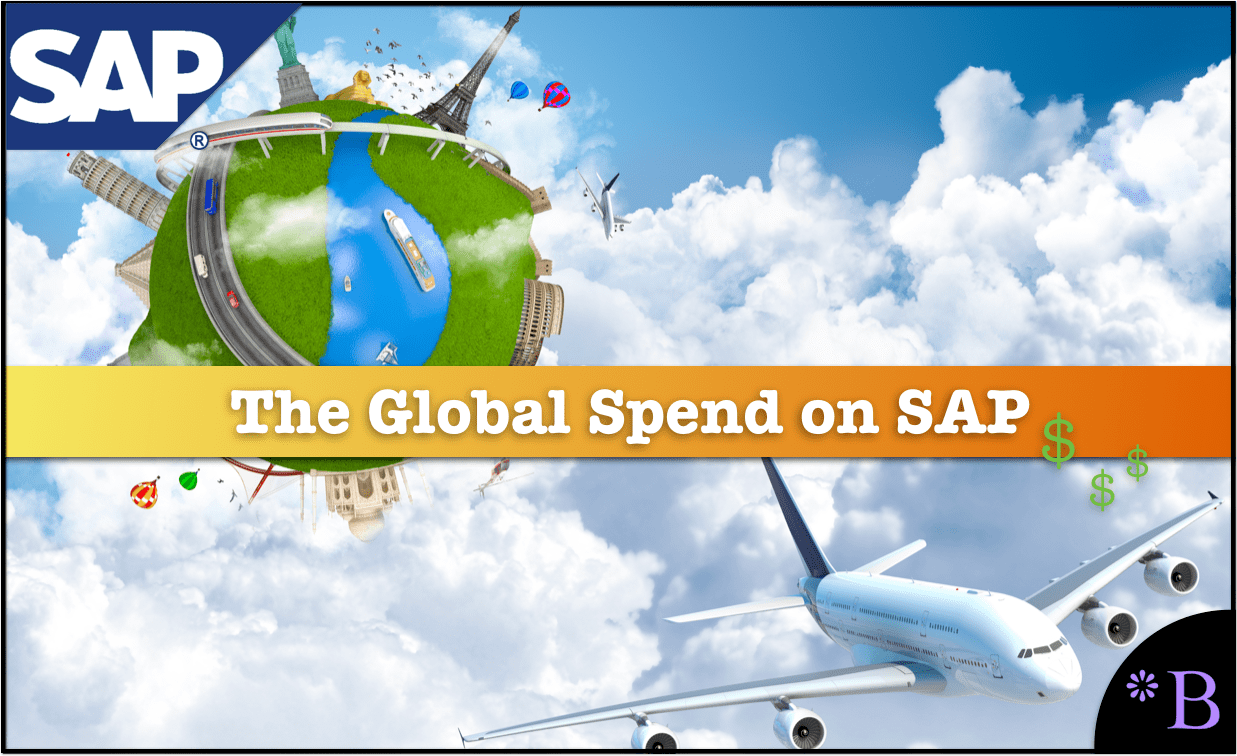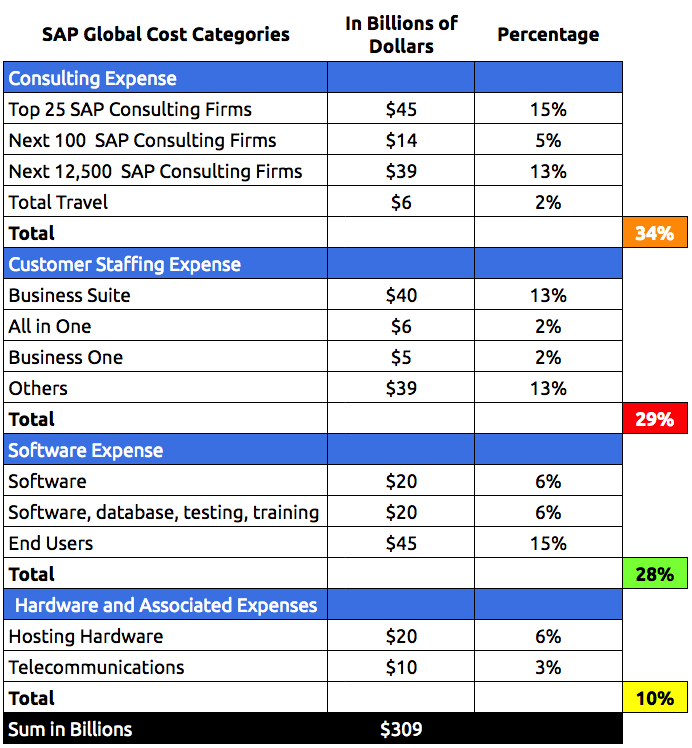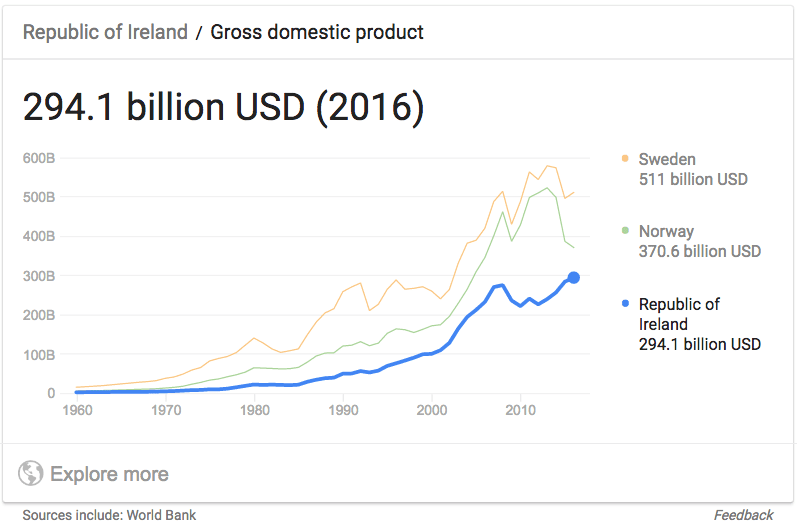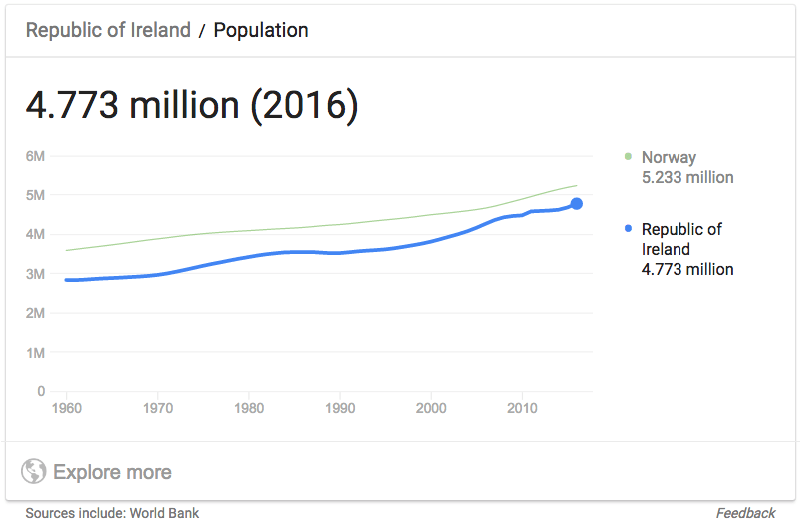SAP Nation 2.0 on the Overall SAP Ecosystem Annual Spend
Executive Summary
- In the book SAP Nation 2.0, Vinnie Mirchandani estimated the total annual spend in the overall SAP ecosystem.
- Who supported Vinnie in his quest to perform this estimation?

Introduction
In our TCO calculators, which are available for free online, SAP routinely ranks as the highest TCO software. SAP also has the largest consulting partner network with roughly 12,500 consulting firms that focus on SAP. The reason? Because SAP consulting is the most lucrative type of consulting. None of these consulting firms selects to focus on SAP for any other purpose than it provides the highest profitability. This profitability is good for SAP consulting firms but bad for customers. However, what is the overall global picture of spending on SAP?
In this article, we will review the global estimate of the SAP spend by SAP customers.
Our References for This Article
If you want to see our references for this article and other related Brightwork articles, see this link.
Notice of Lack of Financial Bias: We have no financial ties to SAP or any other entity mentioned in this article.
- This is published by a research entity, not some lowbrow entity that is part of the SAP ecosystem.
- Second, no one paid for this article to be written, and it is not pretending to inform you while being rigged to sell you software or consulting services. Unlike nearly every other article you will find from Google on this topic, it has had no input from any company's marketing or sales department. As you are reading this article, consider how rare this is. The vast majority of information on the Internet on SAP is provided by SAP, which is filled with false claims and sleazy consulting companies and SAP consultants who will tell any lie for personal benefit. Furthermore, SAP pays off all IT analysts -- who have the same concern for accuracy as SAP. Not one of these entities will disclose their pro-SAP financial bias to their readers.
The Estimate from SAP Nation 2.0
In the book SAP Nation 2.0, Vinnie Mirchandani created the only estimate I am aware of about the total yearly spend on SAP. I have reformatted the table from SAP Nation 2.0 with changes in formatting to make it more readable and added a percentage per cost category. The cost categories are the following.

The total comes to over $309 billion, and the book was published in 2016, which means as of this article’s publication (in 2018), the spend is, of course, higher.
How High is this Global Spend?
Numbers this high are difficult to interpret without some frame of reference. In SAP Nation 2.0, Vinnie compares this GDP to that of Ireland. And we include several other countries in the following graphic with similar GDPs.

Ireland’s GDP supports around 5 million people. Norway’s 370 billion USD support around 5 million people.

SAP’s Small Percentage of the Overall Spend
What is illuminating is that SAP’s revenues are only roughly 8% of the total SAP spend. This is quite low, but it also highlights that the cost of purchasing software licenses and support from the vendor is always a small fraction of the overall spend or TCO of any application. SAP’s overall spend is particularly exaggerated because SAP projects are nearly always implemented by SAP partners, and SAP projects are the most expensive in the industry.
Who Supported Vinnie in His Quest?
For his book, Vinnie reached out to the top analyst firms to get their views on the spend size. Curiously, these analysts did not seem very interested in supporting Vinnie’s efforts in estimation.
“Firms like Forrester, Gartner and IDC often 10-40 analysts who cover different aspects of a large technology vendor like SAP, but they do not often employ integrative models. I had to reach out to several analysts to help validate small segments of my model of the SAP economy. Other market analysts were more defensive. One question why I was even modeling the SAP economy when I am “not a full time analyst.” Another declined saying it is a “sensitive topic.” Customers should expect analysts to take more of the customer perspective as they cover SAP and the ERP marketplace and to better weaver the research their silos.”
All of these analyst firms receive large amounts of money from SAP. Therefore, as SAP is their client, any analysis that investigates their client’s spending, which may open up the ecosystem to criticism, is declared a “sensitive topic.” That is sensitive to their bottom line! This is in line with what we covered in-depth in the book Gartner and the Magic Quadrant, that Gartner is not a true research entity but rather a faux research entity that sells faux research to companies that don’t know what research is.